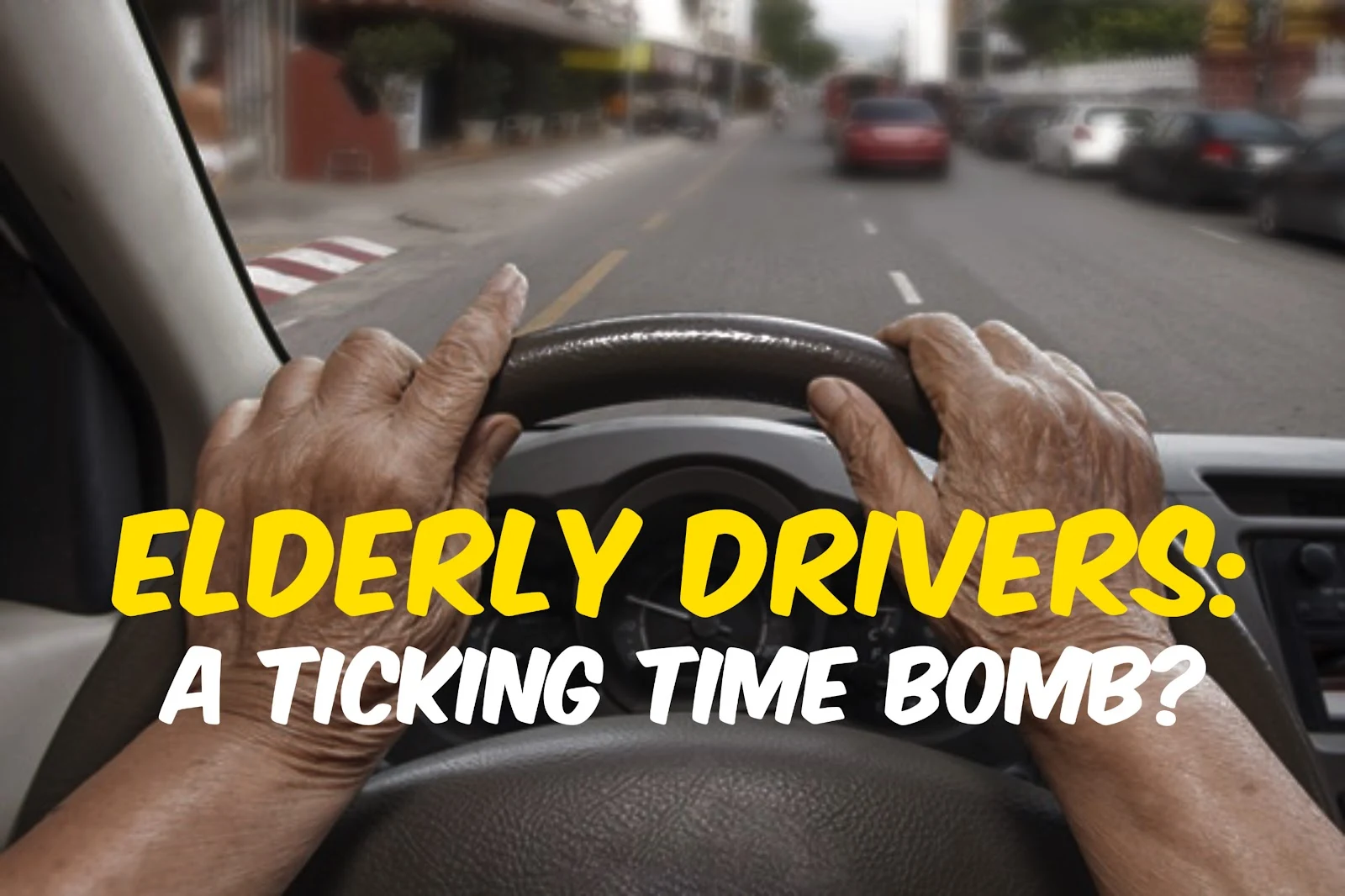South Korea is entering a rapidly aging society, and with this demographic shift comes a growing concern: the rise of elderly drivers on the roads. Traffic accidents involving elderly drivers are becoming increasingly frequent, often resulting in serious injuries or fatalities. The primary causes are reported to include cognitive decline, delayed reaction times, and pedal misapplication.
As of 2024, there are over 4 million licensed drivers aged 65 and above in South Korea. Many accidents involve claims of sudden unintended acceleration. However, investigations often reveal that these incidents stem from driver error—such as confusing the accelerator with the brake or incorrect gear handling—rather than mechanical failure. So how should Korean society respond to this challenge?
1. Current Status in South Korea
Rising Number of Elderly Drivers
South Korea is expected to fully transition into an aged society by 2025. The number of elderly drivers continues to rise, exceeding 4 million in 2024. Studies show that elderly drivers have a higher accident and fatality rate compared to other age groups.
Common Causes of Elderly-Related Accidents
While sudden acceleration is frequently cited, most cases result from driver mistakes, such as stepping on the wrong pedal or misjudging vehicle controls. Contributing factors include slower reaction times, reduced visual and cognitive perception, and overconfidence from long driving experience.
Notable Case – Sudden Acceleration Incident near Seoul City Hall (2024)
On July 1, 2024, a vehicle driven by a man in his 70s suddenly veered onto the sidewalk near Seoul City Hall, killing 9 pedestrians and injuring 4 others. The driver claimed he had been pressing the brake the entire time and insisted the car malfunctioned. However, police investigations, aided by black box footage and eyewitness accounts, suggested that the vehicle was slowing gradually, pointing more likely to human error than mechanical failure. This tragic event intensified public discourse on the declining driving capabilities of elderly drivers and the urgent need for institutional responses.
2. Comparison with Other Countries
Japan – A Super-Aged Society Facing the Same Challenge
Japan, one of the most rapidly aging nations, saw its population aged 65 and over surpass 29% in 2024. The country faced a wake-up call in 2019 with the Ikebukuro tragedy, where an 87-year-old man accidentally accelerated, killing a mother and her daughter.
Japan's Policy Measures:
- Mandatory cognitive function tests for drivers aged 75 and above
- Subsidies for vehicles with auto-brake and pedal error prevention systems
- License return campaigns offering incentives such as free bus passes or taxi discounts
Despite these measures, many elderly in rural areas are hesitant to give up driving due to limited public transportation—indicating that policy and infrastructure must evolve together.
Germany – A Technology-Driven Approach with Emphasis on Autonomy
Germany boasts a well-developed public transport system and comparatively low accident rates among elderly drivers. However, it does not impose expiration dates or renewal requirements for driver's licenses, sparking debate.
How Germany Handles the Issue:
- Promotes voluntary driving ability assessments for the elderly
- Allows doctors and family members to recommend license surrender
- Supports adoption of ADAS (Advanced Driver Assistance Systems) like lane-keeping and emergency braking
Germany prefers trust and technological solutions over legal enforcement, aiming to balance safety with personal autonomy.
United States – Navigating Between Personal Freedom and Safety
The U.S. faces unique challenges, especially in suburban and rural areas where driving is often a necessity for survival. There are over 50 million drivers aged 70 and above, and in some states, elderly drivers account for more than 20% of total accidents.
How the U.S. Responds:
- State-level laws vary: some require vision tests and skill assessments for seniors
- AARP offers driver safety workshops for older adults
- Increased attention on autonomous vehicles as a future solution
Still, due to strong cultural respect for individual rights, mandatory license surrender policies often face resistance.
3. Lessons for South Korea
1. Policy Measures – Cognitive Testing & Conditional Licenses
Introduce mandatory cognitive and reaction-time assessments for drivers beyond a certain age. Issue restricted licenses based on results—such as prohibiting nighttime driving or highway use.
2. Technological Measures – Embrace Smart Safety Features
Encourage carmakers to implement safety tech like sudden acceleration prevention, automatic braking, and lane assistance. Gradually introduce autonomous driving features tailored for elderly users.
3. Cultural Shift – Promote the Idea of “Driving Graduation”
Encourage a positive cultural shift where license surrender is seen not as failure but as a responsible decision. Offer family consultation programs and community transport support to assist the transition.
4. Expand Alternative Transportation
Improve access to low-floor buses, community taxis, and ride-hailing services to help elderly citizens maintain mobility without driving.
Conclusion: A Holistic Approach to a National Concern
As South Korea moves further into an aged society, addressing elderly driver safety is no longer optional—it is essential. By learning from the experiences of Japan, Germany, and the U.S., Korea can adopt policy, technological, and societal reforms that protect both senior drivers and the public.
Ultimately, the goal is to guarantee safe mobility for the elderly—whether they remain behind the wheel or transition to other means of transportation. It is time for Korea to act decisively with a forward-thinking, inclusive approach.

Comments
Post a Comment